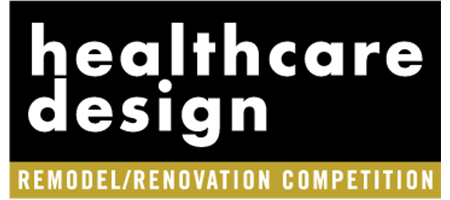UChicago Medicine Crown Point, Crown Point, Indiana
Undergoing intensive medical treatment is challenging enough without the burden of long commutes to major hospitals. For patients in rural and exurban areas, this is the reality. Market surveys from 2017-2019 showed 15 percent of Northwest Indiana residents traveled outside the area for medical services, according to COMPdata.
Amid growing awareness among healthcare providers of the importance of bringing crucial care to medically underserved areas, UChicago Medicine (Chicago) has opened a multispecialty care center and microhospital in Crown Point, Ind., designed by Perkins&Will (Chicago and Seattle).
Opened in April, the 132,000-square-foot UChicago Medicine Crown Point is the academic health system’s largest off-campus facility, designed to deliver advanced care within a personalized and family-centric environment.
Planning a microhospital
Now, patients have access to a comprehensive range of medical care provided by UChicago Medicine’s physicians and specialists, spanning fields from cancer care, cardiology, digestive diseases, and orthopedics to neurosciences, pediatrics, primary care, surgical specialties, transplant care, and women’s health.
The project team, including healthcare developer PMB (Solana Beach, Calif.), design-build partner Walsh Construction (Chicago), and Perkins&Will, the architecture firm on the project, delivered the new facility with a focus on efficiency, economy, and flexibility.
The project combines a short-stay inpatient unit with eight beds, an emergency department, imaging center, ambulatory surgery center, cancer center, and outpatient specialty clinics, all within an efficient footprint.
Exterior and interior design details
Drawing inspiration from the local architecture, the facility’s precast concrete envelope references Indiana limestone, enhanced by textured accents that create dynamic interplays of light and shadow throughout the day. Filled with natural light and surrounded by native prairie grasses, the building promotes patient health and tranquility and provides accessible green space for community residents.
Inside, the 2-story lobby serves as the central hub for patients and their families. The space features an expansive glass entry, rift white oak millwork, and Indiana limestone-clad walls to reinforce the project’s connection to the prairie site.
Wayfinding between the discrete programmatic units is enhanced through distinct color schemes and graphics inspired by Lake Michigan and surrounding prairie grass fields, dunes, and limestone quarries as well as many local varieties of wildflowers, butterflies, birds, and trees.
The first-floor radiation oncology waiting area, for example, features a wave-pattern screen to provide filtered light and privacy. Indiana limestone at the two-story elevator enclosure acts as a hearth and creates a warm neutral backdrop. A suspended art piece that mimics clouds, curated by UChicago Medicine, is experienced on both levels of the atrium.
Additional details to enhance the patient experience included sound masking in patient spaces, daylit infusion and surgical pre- and post-recovery rooms, and operable window shades in patient rooms to reduce glare and allow patients to adjust to their comfort level.
Healthy materials selections for healthcare
The project team was also mindful that the interior material selection needed to balance health with cost, procurement, and performance parameters. The project materials were reviewed against Perkins&Will’s Precautionary List and LEED’s low-emitting material standards.
The Precautionary List is a screening filter to identify materials with known human health impacts, not a banned list of substances. The tool allows design professionals to search for key substances and chemicals of concern using filters like project types, product type, and health and environmental impacts. .
Since its inception in 2008, the information contained in the list has become more comprehensive with new and evolving data including descriptions of substances, health and environmental hazards, ways in which people can be exposed (“pathways of exposure”), relevant government regulations and industry rating systems, and associated building products.
For the UChicago Medicine Crown Point project, the Precautionary List allowed designers to identify products containing chemicals of concern (those with known human health impacts) and have conversations with UChicago Medicine on alternatives. The interior acoustical ceiling tile and the exterior metal soffit ceiling system are examples of selected products that are “Precautionary-List Free.” The selection of these ceiling systems involved a careful balance of meeting acoustic requirements for healthcare environments, aggressive procurement milestones, and minimizing health impacts.
Jennifer Riddle Curley, AIA, LEED AP, is practice leader, associate principal, at Perkins&Will (Chicago) and can be reached at [email protected]. Melissa Dicaire, RID, LEED AP ID+C, is a senior interior designer, associate principal, at Perkins&Will and can be reached at [email protected]. Brad Hinthorne, AIA, LEED AP BD+C, is managing principal at Perkins&Will and can be reached at [email protected]. Andrew Sommerville, AIA, NCARB, RELi AP, is a project manager, senior associate, at Perkins&Will and can be reached at [email protected].











